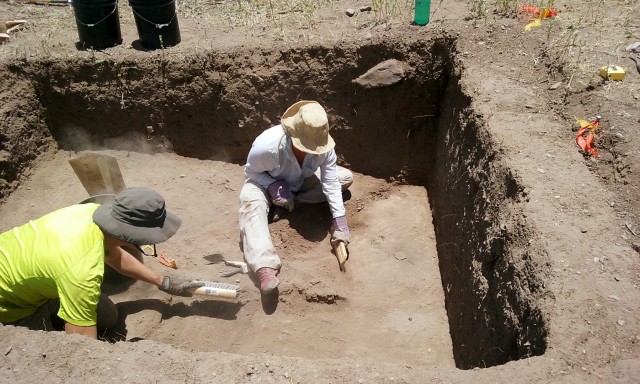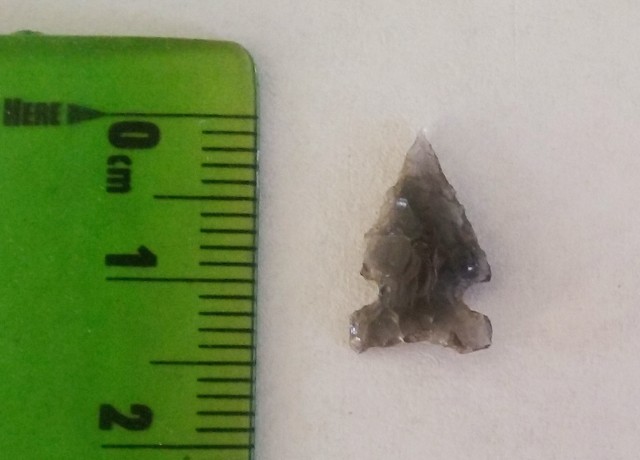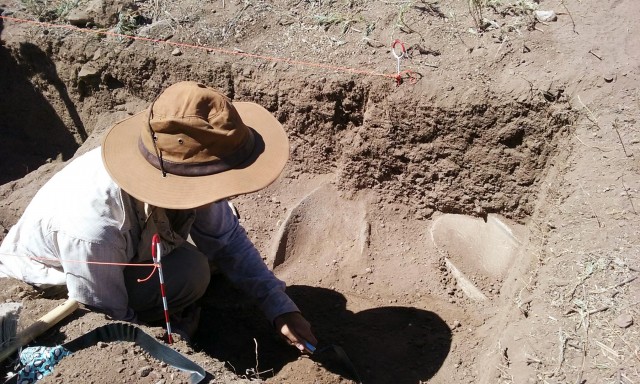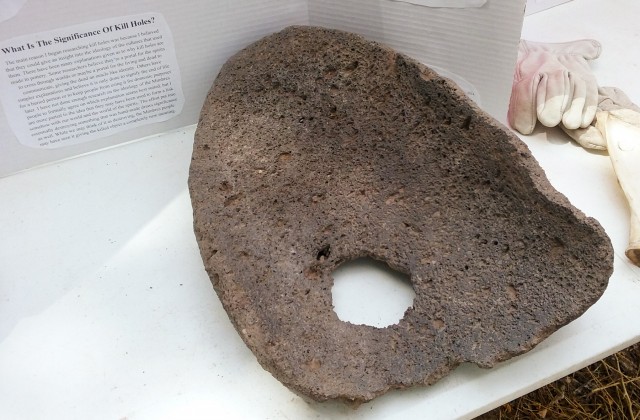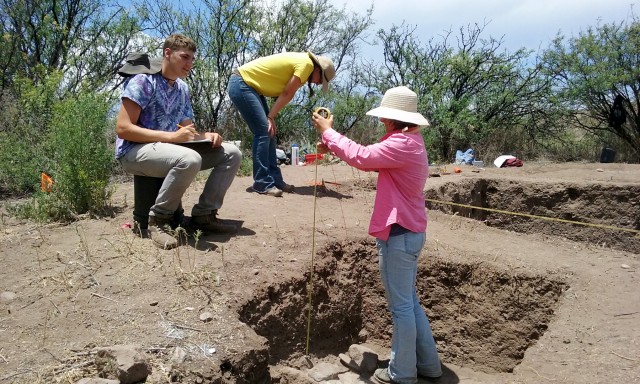- Home
- >
- Preservation Archaeology Blog
- >
- A Room Revealed
Stacy L. Ryan, Teaching Assistant, Preservation Archaeology Field School
(July 12, 2016)—Field school provides an opportunity to spend weeks getting to the bottom of a feature, and interpretations of what we encounter along the way can shift during the process. We proceed with patience and the desire to learn more about how people lived at a certain place during a specific time.
In our case, the feature was a Cliff phase (A.D. 1300–1450) adobe room at the Gila River Farm site. By season’s end, my crew had exposed enough of the room to gain insights into how people built and used this room, and much of what we learned was revealed to us by the stone tools left behind.
Already having an idea of the location of the adobe walls that bound our room within a larger room block—thanks to the Brigadoon Effect—our next tasks involved exposing the walls and determining the depth of our feature. Students shoveled and picked through layers of compact fill that contained few artifacts, puzzling over the lack of discarded or washed-in cultural material and curious about the possible effects of past disturbances.
About a meter (~3 feet) down, we found the floor and discovered that someone (or a group of people) had placed a biface on the floor as residents departed, possibly during a ceremonial closing. Days later, while digging a small window into a well-preserved portion of the floor, we found a small obsidian side-notched arrow point. The point appears to have been deposited during construction and sealed over by the adobe surface.
Meanwhile, a visit from the Linking Hispanic Heritage through Archaeology education group gave us an opportunity to work in another area of the room. Sharing their newly acquired skills, field school students worked with high school students to uncover the remnants of the east adobe wall, which was located in a prominent bulldozer cut. It was within this corner of the room that we uncovered three metates! A hole in the largest metate indicates it was either intentionally killed and retired, or worn through from use. Further analysis by Desert Archaeology’s ground stone specialist, Dr. Jenny Adams, will help answer this question.
|
|
Given the nature of disturbance in this area, we could not exclude the possibility that the ground stone was out of context. Removing the metates, however, revealed a stockpile of five manos. Beneath these we found evidence of adobe-lined grinding stations, with ceramic vessels placed in plastered and ash-lined pits to serve as flour or meal receptacles.
|
|
We now know that, approximately 700 years ago, food processing was an important function in this structure, and that flaked stone tools held meaning to those who lived there. As post-field analysis continues, we will learn more about the history of this room and how it compares with others at the site. Many thanks to the students for their hard work in the field and lab this season!
Explore the News
-
Join Today
Keep up with the latest discoveries in southwestern archaeology. Join today, and receive Archaeology Southwest Magazine, among other member benefits.
